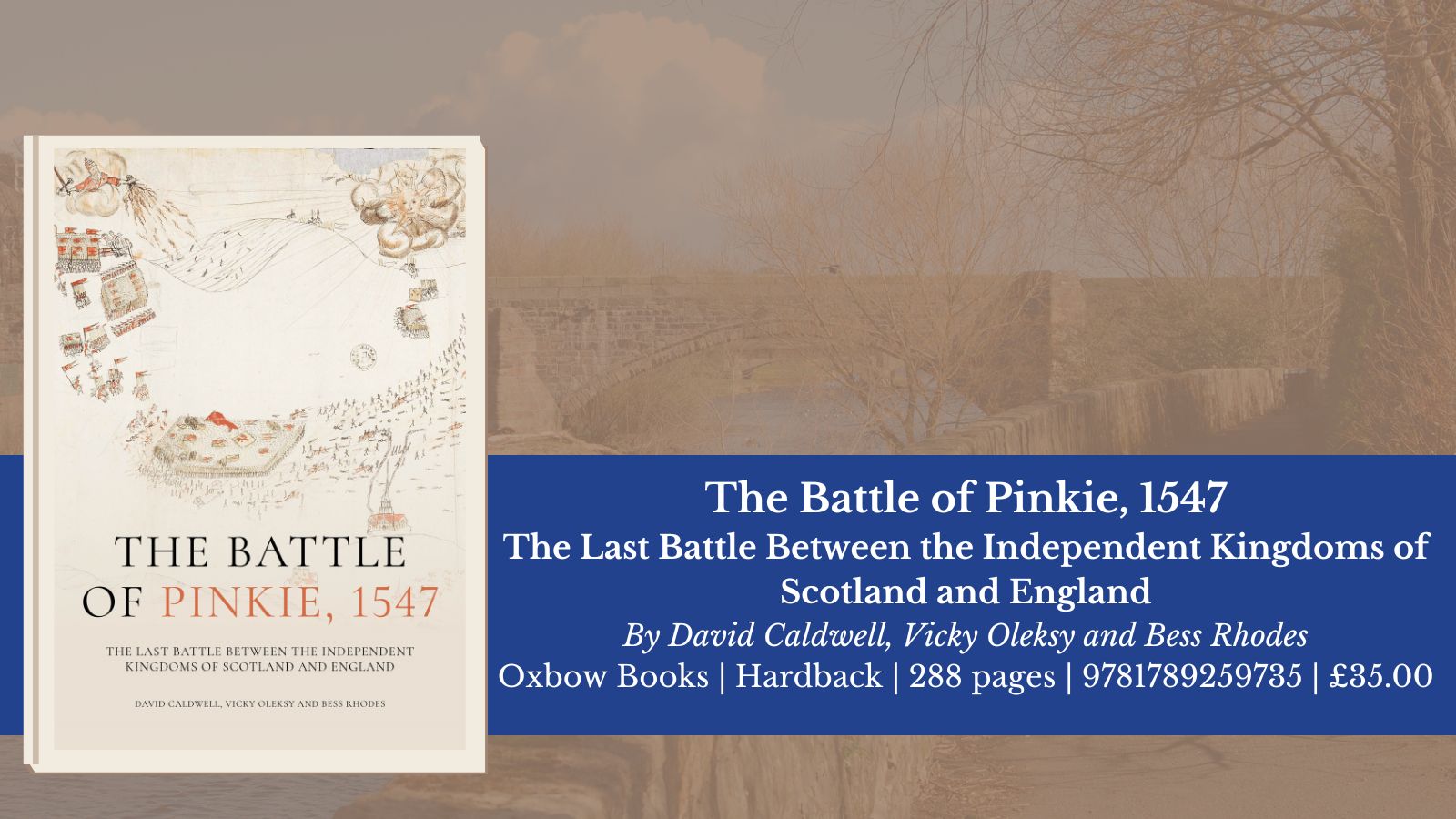Today (10th September) marks the anniversary of The Battle of Pinkie, the last military altercation between Scotland and England as independent nations. However, despite the significance of this clash, it has largely slipped from popular consciousness.
Strengthen your knowledge of this historic confrontation with this blog, in which David Caldwell explains why the battle deserves to be better understood, and offers a sneak peek at the insights provided by his co-authored volume, The Battle of Pinkie, 1547.
By David Caldwell, co-author of The Battle of Pinkie, 1547 | 3 min read
I first took an interest in The Battle of Pinkie in the early 1980s when I was researching my PhD on the early use of guns and fairly easily discovered accounts of what happened, both early sources and modern interpretations. The forces of Scotland were comprehensively defeated. It appeared that there was little doubt that the English should and would win. There are even contemporary plans and pictures as well as images of some of the main commanders. In 1991 I was invited to contribute an account of the battle to an academic volume on Scotland and war. And that, I thought was that. I had said my piece and it was time to move on to other things.
The Battle of Pinkie deserves to be commemorated and better understood.

In recent years, however, there has been considerable new interest in the battle, as battlefields have been viewed as worthy of state protection and proposals for developing land have resulted in archaeological surveys and excavations. A new generation of historians and archaeologists have looked at the wider context of the battle in the light of European developments in warfare and there has been much interest locally in what was clearly a significant event involving thousands of people from the length and breadth of Britain and further afield, not just the men who stood in the ranks with their weapons, but all the others who supported the armies in various ways or suffered consequences from their passage. There were many women left as widows and children who lost their fathers. There is clearly a realisation that the Battle of Pinkie deserves to be commemorated and better understood.
I had not initially intended to get sucked into writing a book on the subject but as I was more and more consulted or reminded about my earlier efforts I perceived that there was a real need to go back to first principles, review all possible sources of information, ask basic questions like how, where and why the fighting took place and gain a better understanding of all the participants. I was fortunate to get two experienced colleagues to collaborate with me – Vicky Oleksy and Bess Rhodes. Thanks to them I believe our book provides an objective new account of what happened at Pinkie and its significance in the creation of the United Kingdom.
Our book provides an objective new account of what happened at Pinkie and its significance in the creation of the United Kingdom.
What emerges is a more rounded picture of events in the mid sixteenth century, centred on the battle itself and moves to unite Scotland and England as a protestant nation through the marriage of the young Mary Queen of Scots with King Edward VI of England. Considerable attention is paid to the main players on both sides, their motives and aspirations. Neither of the two generals, James Hamilton, Earl of Arran, for the Scots, or Edward Seymour, Duke of Somerset, for the English, have attracted the same level of scrutiny as other national leaders in earlier or later times but both are of considerable interest. Arran lost the battle but survived as a key player in Scottish affairs to what would have been considered a good old age while Somerset literally lost his head four years later as a result of the unpopularity of his policies.

To our surprise, we discovered that there were several early sources for the battle which had either been overlooked or ignored by other writers on the subject. We also had access to recent archaeological surveys of the battlefield and topographic analyses. Combining these different sources has helped us create a convincing picture of what happened where during the battle and the days immediately before and afterwards. We have questioned or rejected several assumptions that have been made in more recent interpretations of the battle that are not sufficiently grounded in reliable sources of information. We have assessed the resources available to both sides and the experience of their commanders. We hope we have provided a good and interesting account, at the very least one that can be used as a basis for further analyses, especially if future archaeological exploration provides more information on the actual events of September 1547.
So, did the English win a crushing victory and was it inevitable the Scots would lose? Well, of course, these are matters fully dealt with in this book. Read it and see if you agree!
The Battle of Pinkie, 1547 is available now from Oxbow Books
Featured image: Battle of Pinkie, woodcut illustration from William Patten (1548)



